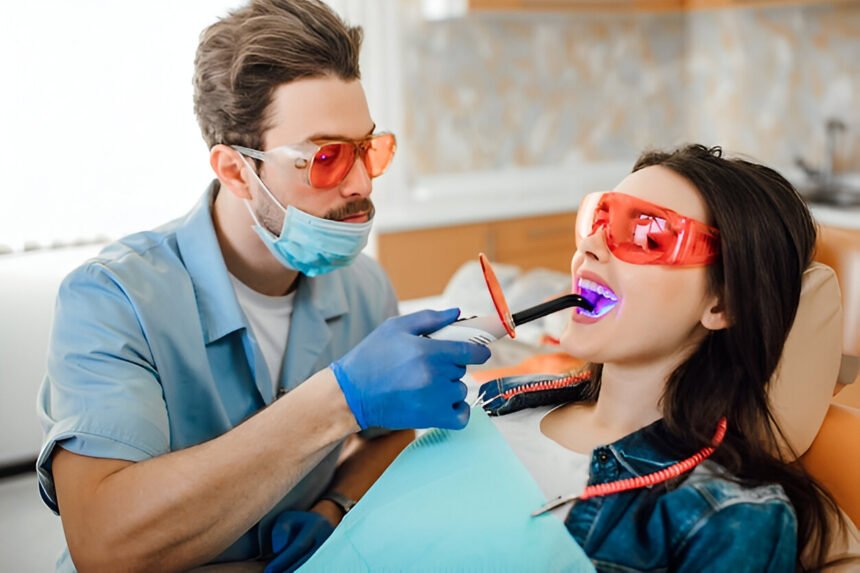In today’s world, a bright, white smile is often associated with health, youth, and beauty. As a result, tooth whitening has become increasingly popular as people seek to enhance their smiles and boost their confidence. If you’re considering tooth whitening or simply curious about the process, this comprehensive guide will provide you with all the information you need to make an informed decision.
Understanding Tooth Discoloration
Before delving into tooth whitening methods, it’s essential to understand the various factors that can lead to tooth discoloration. Tooth discoloration can be categorized into two main types:
Intrinsic Discoloration
Intrinsic discoloration occurs when the inner structure of the tooth, known as dentin, darkens or becomes yellowed. This type of discoloration is often caused by factors such as aging, genetics, certain medications, and excessive fluoride consumption during tooth development.
Extrinsic Discoloration
Extrinsic discoloration, on the other hand, affects the outer layer of the tooth, known as enamel. Common causes of extrinsic discoloration include consumption of staining foods and beverages, smoking, poor oral hygiene, and certain medications.
Tooth Whitening Methods
There are several tooth whitening methods available, ranging from over-the-counter products to professional treatments performed by a dentist. Here are some of the most common tooth whitening methods:
Over-the-Counter Whitening Products
Over-the-counter whitening products include whitening toothpaste, mouth rinses, strips, and gels. While these products can help remove surface stains and brighten your smile to some extent, they may not be as effective as professional treatments for more stubborn discoloration.
Professional In-Office Whitening
Professional, in-office whitening treatments are performed by a dentist and typically involve the application of a strong whitening agent to the teeth. These treatments are highly effective at removing deep stains and can provide noticeable results in just one session.
At-Home Professional Whitening Kits
At-home professional whitening kits are another popular option for those looking to whiten their teeth. These kits typically include custom-fitted trays and professional-strength whitening gel that you can use at home. While at-home kits may take longer to achieve results compared to in-office treatments, they can still provide excellent whitening outcomes.
Potential Risks and Side Effects
While tooth whitening is generally considered safe, there are some potential risks and side effects to be aware of, especially when using strong whitening agents. Some common side effects of tooth whitening may include:
- Tooth Sensitivity: Whitening agents can sometimes cause temporary sensitivity to hot or cold temperatures.
- Gum Irritation: Whitening products that come into contact with the gums can cause irritation or sensitivity.
- Uneven Results: In some cases, tooth whitening may result in uneven coloration if not applied correctly.
To minimize the risk of side effects, it’s essential to follow the instructions provided with the whitening product and consult with your dentist before starting any whitening treatment.
Maintaining Whitened Teeth
After undergoing a tooth whitening treatment, it’s important to take steps to maintain your newly whitened smile. Here are some tips to help you keep your teeth looking bright:
- Practice Good Oral Hygiene: Brushing and flossing regularly can help prevent the buildup of stains on your teeth.
- Avoid Staining Foods and Beverages: Limit your consumption of coffee, tea, red wine, and other staining foods and beverages.
- Visit Your Dentist Regularly: Regular dental check-ups can help ensure that your teeth stay healthy and white.
By following these tips and maintaining good oral hygiene habits, you can prolong the effects of your tooth whitening treatment and enjoy a bright, radiant smile for years to come.
Conclusion
Tooth whitening is a popular cosmetic dental procedure that can help enhance your smile and boost your self-confidence. Whether you choose to use over-the-counter products, undergo a professional in-office treatment, or opt for an at-home whitening kit, it’s essential to understand the various methods available and the potential risks involved.
Remember, tooth whitening is not a one-size-fits-all solution, and the effectiveness of the treatment may vary depending on the cause and severity of your tooth discoloration. Consulting with your dentist can help you determine the best whitening option for your specific needs and ensure that you achieve the bright, white smile you desire.











